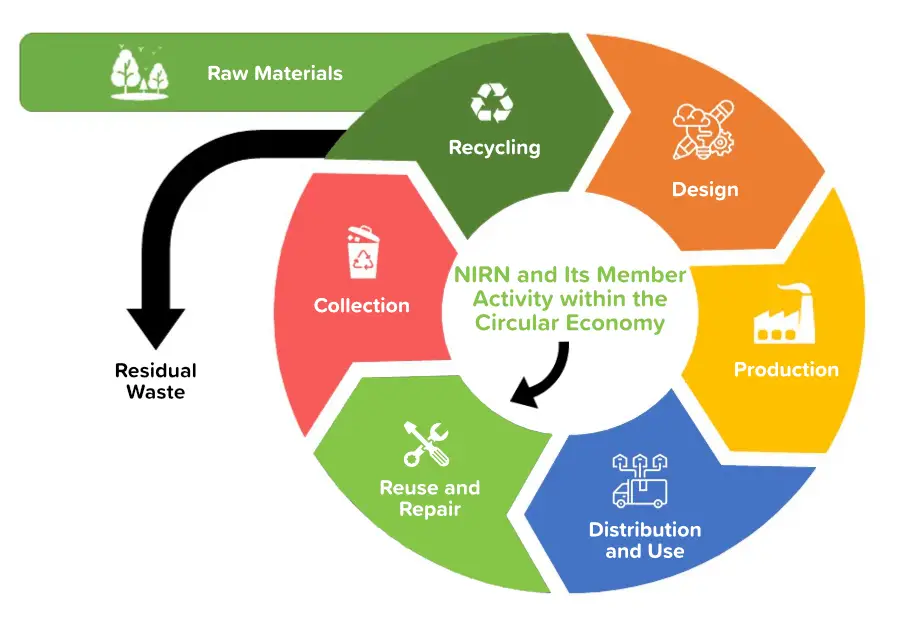Circular Economy
What is the Circular Economy
A circular economy is an alternative to a traditional linear economy where products are made, used and then disposed of.
Moving to a Circular Economy eliminates the take-make-waste system. It ensures resources are valued and kept in use for as long as possible. Waste is treated as a resource with the maximum value extracted from it whilst in use, and then products and materials are recovered and regenerated at the end of each service life.

Circularity Gap Report
The Circularity Gap Report
The Circularity Gap Report 2025 finds that the world is now only 6.9% circular down from 7.2%. Ongoing declines in circularity can largely be tied to sustained growth in material use. While there’s been some progress towards decarbonisation, it isn’t enough to limit warming to 1.5-degrees. Total energy supply and global greenhouse gas emissions are still trending upwards—and while we’re seeing positive increases in electrification and renewable energy consumption, we’re not yet on track to meet global targets. Business as usual simply cannot continue if we’re to achieve global climate, biodiversity, and pollution targets and protect and preserve Earth’s life support system.
Transition to a Circular Economy
To successfully transition to a circular economy, we need to change the rules of the game. Fundamentally, this requires a shift in behaviours, norms and belief systems.
Only 7.9% of the resources Northern Ireland uses are cycled back into the economy after use. Or in other words: more than 92% of Northern Ireland’s resources come from virgin sources. The country’s (per capita) material footprint of 16.6 tonnes far surpasses the global average of 11.9 tonnes. Such overconsumption exhausts the planet’s vital ecosystems and threatens our quality of life. (CGR N.Ireland 2023)
The transition to a more circular economy provides Northern Ireland with a unique opportunity to reduce the material footprint of its consumption almost by half—and in turn, bring its economy within sustainable levels without compromising social standards. An estimated £474 million of annual economic opportunities have been identified for Northern Ireland from moving to a circular economy and more than 13,000 jobs could be created according to the ReNew report into the Circular EconomyNI
Job Creation in the Circular Economy
Climate Change and the Circular Economy
Learn more about NIRNs role in the Circular Economy
Adopting a circular economy is not just an environmental urgency but also an economic opportunity. By rethinking how resources are used and adopting more sustainable practices, regions like Northern Ireland can lead the way in creating resilient and sustainable economies that benefit both people and the planet.
New circular economy approaches, and systems could emerge based on taking advantage of technologies such as: artificial intelligence (AI), Internet of Things (IoT), Advanced Data Analytics, etc. Also, emerging topics in circular economy technologies focus on energy, policy, models, and global systems.
By developing the Circular Economy, Northern Ireland can take positive action on reducing its emissions, whilst also supporting waste reduction, economic growth, job creation and social good. With the increasing focus on environmental issues including climate change, limited and scarce virgin raw materials and disposal of waste, NIRN and its members have published a position paper highlighting the connections between climate change and circular economy, driving awareness and recommendations to combat these challenges in Northern Ireland.
